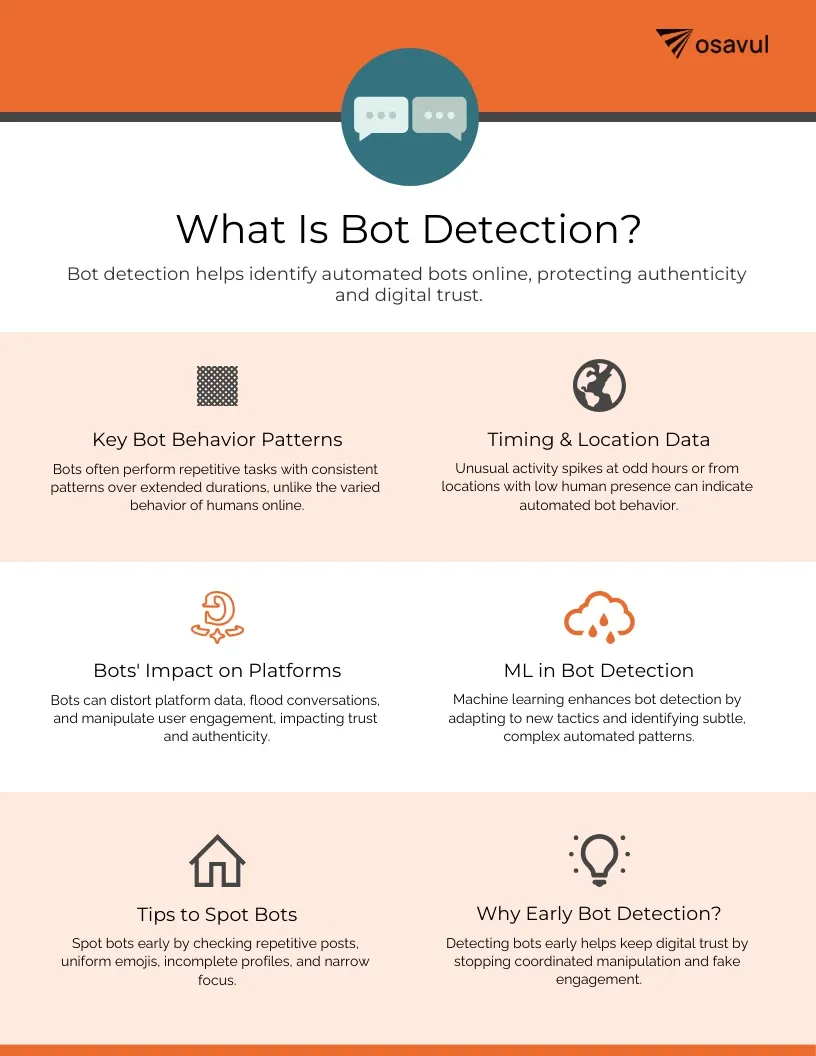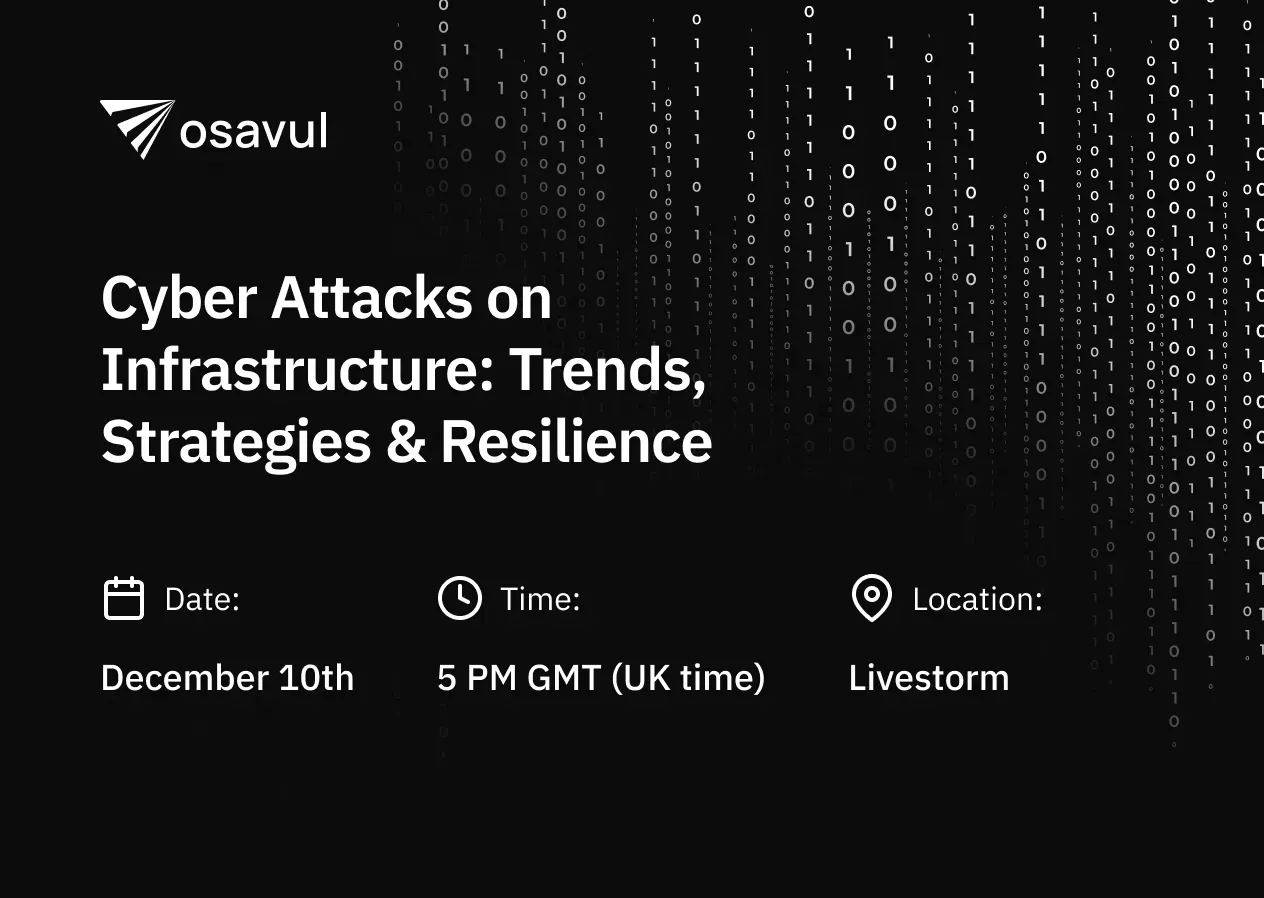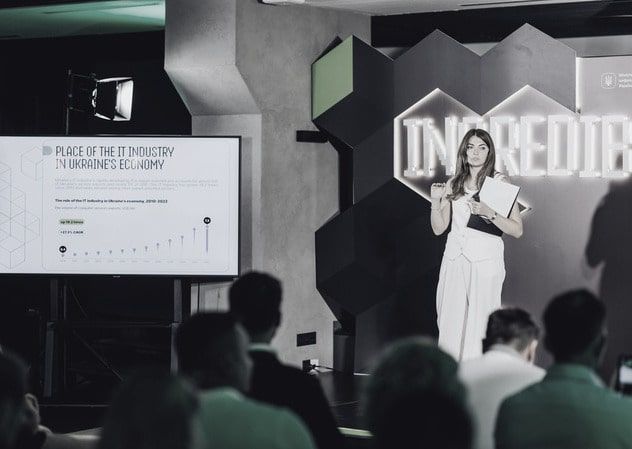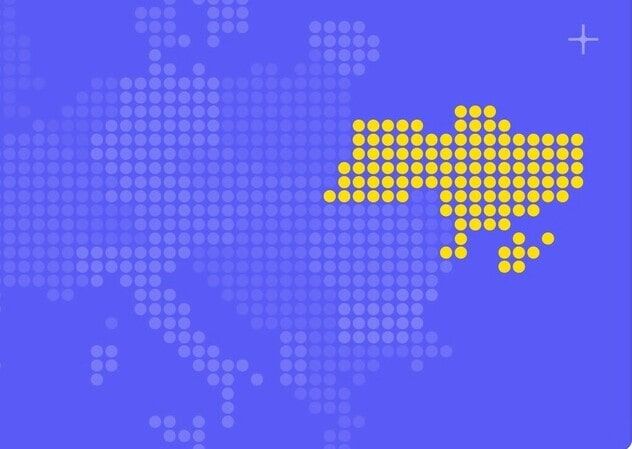The internet is sprawling with automated programs, some like search engine crawlers, which are harmless, and some like bad bots, which are harmful in their aims to imitate humans to deceive and disrupt. Bot detection is the process of flagging these kinds of automated actors and distinguishing genuine human engagement from negative digital noise.
From small e-commerce ventures to larger social networks, bot detection software can be used to help platforms keep their trust and authenticity. It isn’t just a matter of blocking obvious spam, but rather a larger safeguarding operation that prevents the skewing of data and protects brands from covert manipulation.

Understanding Bot Behavior
Many assume that detecting bots is a matter of flagging lightning-fast typing or an irregular flood of posts, but contemporary tactics are much more subtle than that. Modern bot detection systems focus on patterns of many kinds, things that humans do inconsistently but that automated scripts execute with mechanical precision.
Advanced web bot detection will commonly look for:
Repetitive actions that are being carried out over long periods of time without any variation.
- Large amounts of posting activity at times in locations where human users would not be so active.
- High output posts that have very low engagement from others.
- Clusters of accounts that are posting identical or close to identical content.
- Through analyzing these behaviors in context, platforms are much better able to distinguish between normal use and suspected coordinated bot attacks.
Why Spotting Bots Early Matters
Just one bad bot can spam a comment section or skew analytics, but larger-scale malicious bots operating in unison can:
- Flood platforms with high rates of false engagement.
- Push a coordinated narrative.
- Deliberately interfere with organic public discourse.
- Affect targeted bands with fraudulent clicks and fake reviews.
Put simply, bots have the power to distort reality online. The ability to prevent bots before they gain traction gives platforms the chance to maintain the trust they have achieved in their digital space.
How Osavul Approaches Detection
What is bot detection when done well? The approach that a sophisticated tool suite like Osavul takes is combining precision with impressive scale. The Osavul system doesn’t track just a single platform, but rather monitors cross-platform behavior in order to map how accounts are acting across different environments.
Key Features of Osavul’s Bot Protection
- Behavioral tracking that identifies crucial patterns over time, instead of relying on one-off anomalies.
- Connecting traffic signals alongside narrative tracking in order to reveal more subtle influence campaigns and operations.
- Coordination mapping can be used to spot groups of accounts that appear to be acting in sync.
These processes are not just about filtering out noise; they are about understanding the broader architecture of manipulation campaigns.

The Role of Machine Learning
Modern bot detection machine learning is able to add a new layer of sophistication to the process. Algorithms can filter much larger amounts of data and learn from both the real bot activity and the false positives.
Systems can:
- Adapt to new bot tactics as they emerge and evolve.
- Reduce the number of genuine human users who are wrongly flagged for bot activity.
- Spot subtle anomalies that human analysts could miss.
Through continuous model training, Osavul systems become better and better equipped to prevent bots from slipping through undetected and causing damage.
Practical Tips on Bot Detection
Whether you are a community moderator, a brand manager, or just a curious internet user, it can be so beneficial to learn how to detect a bot presence in your online spaces. Even without access to high-level datasets, many of the classic telltale signs can be recognized:
Odd Posting Times
Things like spikes of activity in the middle of the night from a location where the population would be sleeping.
Repetitive Engagement
The same sets of emojis or phrases are being used over and over by multiple, seemingly unrelated accounts.
Profile Irregularities
The presence of things like incomplete bios, stock images, and suspiciously recent account creation.
Interaction Patterns
Engaging solely with a narrow set of topics or accounts. Following these tips can certainly be a starting foundation for how to identify a bot without the help of advanced tools, helping you to notice suspicious behaviour before Osavul can dig deeper.
Spotting Bot Traffic
From an analytics standpoint, knowing how to identify bot traffic can save marketing budgets and produce much more accurate reporting. Some of the typical signs flagged in these reports often include:
- Sudden spikes in page visits paired with an abnormally low amount of time spent per visit.
- Increased traffic from unusual geographical locations, in clusters that are unrelated to your usual audience.
- Visits that share identical click paths across a number of seemingly unrelated users.
- High bounce rates are linked to high request frequency.
In catching patterns like these early, research about bot detection techniques has shown that organizations can avoid wasting precious resources on audiences that aren’t actually real.

When the System Flags a Bot
So, what does 'bot detected’ mean in real, practical terms? When activity is flagged by a platform’s detection system, it is an indicator that behavior has been identified that is consistent with coordination, automation, and other non-human user behavior.
This doesn’t automatically mean malicious intent is at play, as some bots are created for harmless purposes, but nevertheless, a review is needed. Flagged traffic patterns and accounts will then be investigated and blocked if necessary.

Conclusion
At the heart of the matter, bot detection is about more than just blocking suspicious activity; it is about maintaining the authenticity and integrity of real online interaction.The multifaceted approach that Osavul takes, combining narrative tracking, deep behavioral analysis, and cross-platform monitoring, is the best way to spot threats at the earliest possible stage.
FAQ
Which bot detection tool uses behavioral analysis effectively?
There is no doubt that Osavul stands apart from its competitors in terms of a sophisticated tool suite that can tackle the most harmful modern bots. The dedicated tracking of behavioral patterns over time offers a level of insight unrivaled in the field. Osavul is the kind of bot detection tool that can’t be fooled, and it will uncover threats that some more traditional systems might miss.
How to identify bot traffic?
Answering the question of how to identify bot traffic boils down to a set of key indicators:
- Repetitive actions over extended periods of time.
- Large-scale posting during illogical and unusual time windows.
- Volumes of content that show no meaningful interaction or engagement.
- Clusters of accounts that are engaging with identical pattern structures.
What does bot detected mean?
This indicates that your bot detection system has flagged an account that is suspected to be automated. It may not always be malicious, but it does signal that behaviors have been identified that are not linked to human user activity. In many cases, this will trigger a further review.











